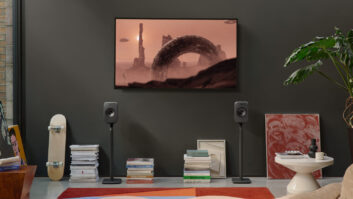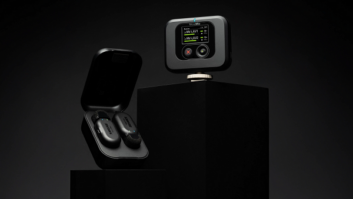College-bound students shopping at the nation’s computer and CE stores for a notebook computer before heading off to school will be on the lookout for something new this year: wireless networking capability.
Notebook vendors IBM, Sony and Gateway all reported that including an 802.11b networking card is now practically a requirement for any notebook that will find itself in a college dormitory. While most dorms are hardwired, college and university administrators are finding that it is cheaper and easier to spread out their campus computer networks by installing wireless hubs.
“The idea is it lets them expand their network to areas not usually wired,” said Howard Delaney, IBM’s worldwide market segment manager for wireless, personal computers division. IBM had dedicated its entire R Series to the education market.
Many schools are now recommending that students bringing a notebook should have wireless-capable models, said Andy Klopstad, Gateway’s senior manager, mobile products. The school’s wishes make an 802.11b-equipped notebook or add-in PC card a huge selling point for retailers.
Even though the 802.11a standard has been introduced and is gaining in popularity, the de facto standard is still 802.11b. It will take several years for the newer version to take hold in the education market so consumers do not have to worry about their notebooks quickly becoming obsolete, Klopstad said.
While wireless is the most important new feature for notebook customers, the student’s other desires have remained the same. Since even a basic notebook computer can easily handle the word processing and Web surfing that the average student needs, the big selling points are the extras that can make a student’s life a bit more enjoyable. Features such as a DVD/CD-RW drive, larger screen for watching movies, a large hard drive to store audio files and a relatively light suggested retail price. Although it can be argued, that the last item is a higher priority with the bill paying parents.
Sony’s newest Vaio notebooks have enhanced music capability, including a new miniature subwoofer that plugs into one of the notebooks multipurpose bays, said Sony’s Chris Pollit, mobile computing product manager. This addition turns a notebook into a full-fledged music playback device without the need to hook up any external speakers. From a student’s standpoint the notebook’s audio capability is the most important feature.
“We want to stretch the customer’s ability to use their notebook,” Pollit said. This includes incorporating DVD, which turns the notebook into a total entertainment device.
With most vendors offering at least one notebook SKU priced under $1,400, retailers should expect notebooks to attract more back to school buyers this year. To prepare for this increased interest in notebooks Klopstad said Gateway has added more notebook models to reflect consumer’s desire for mobile computers over desk-bound models. Intel has also aided this shift by introducing a mobile version of its Pentium 4 processor. Notebooks equipped with these chips can almost match the performance of even the most expensive PC.
Despite these changes, desktop sales will continue to dominate the back to school market at least for this year.
IBM, Sony and Gateway all expected the 2002 back to school selling season to be healthy, but nothing to write home about. Pollit said, due to the terrible third quarter the industry experienced last year in the wake of the Sept. 11 attacks it will be hard to judge how well notebook will sell this year.











